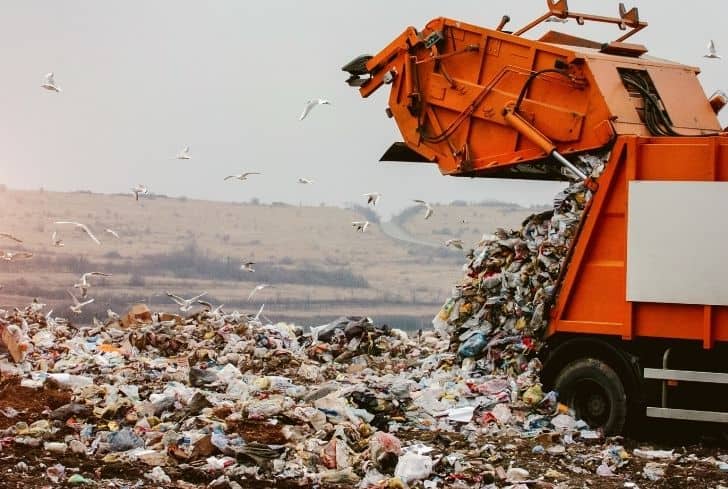Seeing or finding massive piles of waste, old house items, construction waste, or used products dumped by the roadside, in the forests, or at non-designated dumping sites is no longer uncommon.
This trend is on the rise and is increasingly becoming a problem because it hinders the objective of keeping the environment clean and can seriously impact wildlife and habitat.
According to environmental protection agencies and departments, this malpractice is referred to as illegal dumping and is considered unlawful because of the harm it causes to the environment.
What’s even sad, even with the skyrocketing practice of illegal dumping, there are officially designated areas with properly integrated waste management systems that should be used for dumping.
But what exactly is driving this illegal practice?
Well, let’s look at the causes of illegal dumping, its effect on the environment, and the possible solutions to the problem.
Causes of Illegal Dumping
You may wonder why someone would illegally dump their trash, even if they have a readily available disposal channel. But recklessness and unwillingness to be responsible with how individuals handle their waste have played a huge role in this matter.
The following are the most common causes of illegal dumping;
1. High Level of Overall Waste Production
Studies indicate that a higher level of overall waste production is distinctly correlated with increased rates of illegal dumping of waste and dumping spots.
The rise in overall waste production corresponds to increased wealth, rapid change in preferences, and the world’s ever-growing population. Additionally, people are becoming more consumer-oriented than in the past.
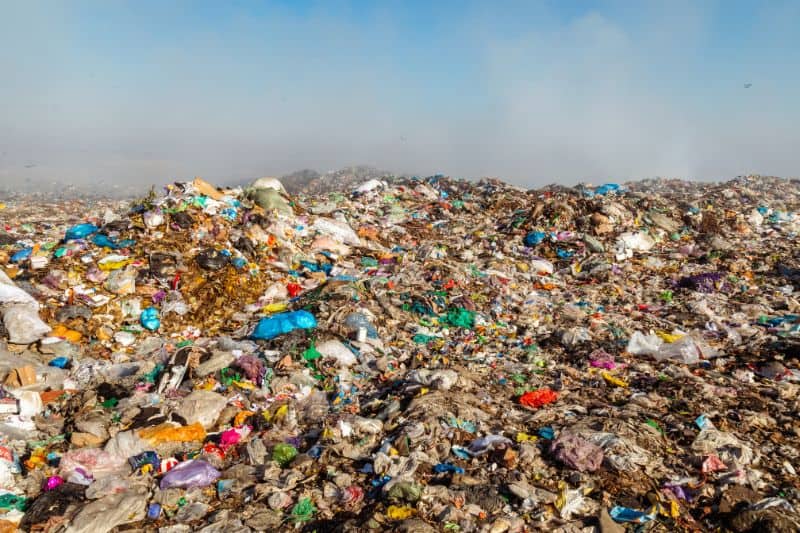
Previously, people relied on new and creative ways to use old stuff. Still, in the contemporary world, most people are searching for new and better products, especially home appliances, clothes, and electronics.
The throwing out of old devices and used home appliances has thus led to increased illegal waste dumping.
2. Population Growth
The growth in the worldwide population is one reason for illegal garbage dumping. Since the overall level of waste production is positively correlated with the population on earth, an increase in the population automatically implies an increase in the amount of overall waste.
People may use official waste disposal sites to get rid of large amounts of waste; however, a small but still significant number of people dump their trash illegally in the woods or other places.
This problem is increasing with a rise in population since more waste is produced, thus the probability of more illegal dumping.
3. Avoidance of Disposal Fees to Waste Management Sites
Cases of residents in various parts of the world disposing of waste themselves are on the rise. This habit is associated with avoiding paying disposal fees at waste management sites.
Those who engage in such acts believe that the prevailing waste collection fees are exorbitant.
Therefore, instead of following the rightful channels for waste disposal or paying third-party waste pick-up services, they illegally dispose of the waste in remote locations.
Several third-party waste pick-up services have also gotten into the habit of dumping waste on illegal dumpsites to avoid paying disposal fees.
4. Some People Don’t Understand the Importance of Waste Recycling
Most people understand and are very much aware of the repercussions of illegal dumping.
Regardless, some individuals don’t see the need for recycling waste or following the proper waste disposal channel and therefore go to highly unusual lengths of illegal waste dumping.
Some people are too lazy to take their trash to official dumping sites. A fraction of our society is also careless about the illegal dumping problem and its consequences.
They avoid prosecution and detection, which means they know their actions are unlawful.
As a matter of fact, most of the items illegally disposed of, such as old appliances, white goods, and furniture, can be easily recycled or even reused.
So, it can be concluded that most people engaging in illegal dumping don’t understand the importance of reusing or recycling waste. Hence, a lack of education also contributes to illegal dumping.
5. Social Norms
In many countries, illegal dumping is often regarded as a minor issue by many people. Humans are known to be influenced quite a lot by the people they primarily interact with.
When your close friends think illegal dumping is not a big deal or they actively participate in it, you are more likely to see it as an acceptable method to get rid of your trash.
Thus, social norms and the behavior of close people play an essential role in how likely you are to accept or reject the idea of illegal dumping.
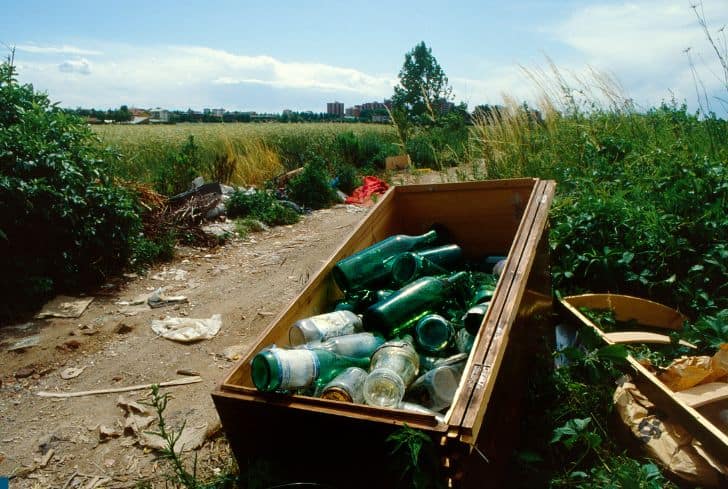
Effects of Illegal Dumping on Our Environment
Illegal dumping may feel harmless, but it has large-scale consequences that can be difficult to reverse.
Here are some of the most commonly observed effects of illegal dumping:
1. Illegal Dumping Damages the Environment
Land, water, soil, and air pollution in the neighborhood are primarily caused by illegal dumping.
The chemicals and non-biodegradable materials in the waste affect the physical environment and the waterways by contaminating groundwater and soil.
The waste can also spread weeds and pests, thus affecting agriculture, wildlife, and the environment.
Wildlife and domesticated animals can also die after consuming poisonous materials such as plastics and chemicals from the waste.
2. Illegal Dumps Can Be Fire Hazards
The illegal dumping of chemicals, tires, household refuse, used automobile parts, hazardous medical waste, and green waste can increase the risk of wildfires.
Cigarette butts may also start fires. When these wastes are exposed to high temperatures and dumpsite decomposition, these items can cause fire quickly.

Besides being exposed to extreme temperatures, the site fire would have toxic air particles when the hazardous materials combust.
This could be inhaled by humans and animals, which could cause severe consequences for the wildlife, and the ground and drinking water could also be severely affected.
3. Dumped Rubbish Diminishes Property Value and Affects Tourism
The value of property obviously diminishes if it is littered with illegal dumping.
Besides, land or places that have been turned into illegal dumpsites can serve as magnets for other criminal activities.
The dirt and smell can also make such areas unsightly, which impacts tourism, especially if the dumping is done in forests or beside the road.
4. Health and Safety Risks
Illegally dumped materials contain toxic substances, sharp objects, white goods, nappies, contaminated medical waste, asbestos, and tires, to mention a few. These materials pose serious health and safety risks to children who may pick, eat, or play with them.
Children may also suffocate in refrigerators that still have doors.
The tires can offer a breeding ground for mosquitoes; contaminated medical waste can spread disease dramatically as waste can lead harmful bacteria to grow exponentially, and sharp objects can physically harm people.
5. The Entire Community Is Put at Risk
It may never be distinctively clear, but illegal dumping puts the entire community at risk.
For example, tires, construction waste, and tree stumps left on the road can result in accidents.
Illegal dumpsites can also block stormwater drainage systems, becoming a breeding ground for diseases and causing flooding.
6. Effects on Birds, Animals, and Plants
Unlawful dumping imposes severe adverse effects on wildlife. Waste that is dumped in forests or other natural environments contains harmful substances.
Animals may be contaminated by harmful bacteria in the trash, spreading diseases among themselves through the food chain.
They may also suffer from a change in their natural living conditions due to trash dumping.
Many react sensitively to a change in their natural living conditions. Therefore, illegal dumping may also lead animals to move to other less contaminated areas where they feel more comfortable in their natural environment.
Plants are also affected by exposure to trash when there is soil contamination.
Moreover, some garbage compounds may also alter the soil’s pH level. Since plants are usually quite sensitive to changes in acidity levels and the elements of soil, illegal dumping may adversely affect their growth behavior.
Aquatic life is also significantly affected by the illegal disposal of waste. When waste is dumped in bodies of water, many of these water organisms suffer from harmful substances. They may even die due to the adverse effects imposed by waste compounds.
Birds may also be affected by the dumping of trash. They often eat small animals like worms or insects, which may decrease significantly if an area is highly contaminated by illegal waste.
This may, in turn, lead to a food shortage for birds, eventually reducing their population.
7. It Costs High Amounts of Taxpayers’ Money
Year in and year out, thousands of cash in terms of taxpayers’ money are committed to cleaning up the mess brought about by illegally dumped waste. Municipalities always spend lots of money fixing natural areas and infrastructure affected by illegal dumping.
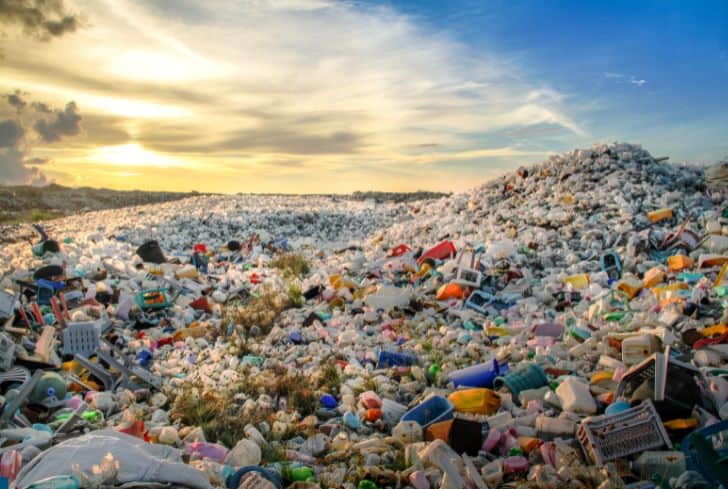
Smart Solutions to Illegal Dumping
Illegal dumping is a complex issue that can’t be solved overnight, but there are steps you can take to help prevent it in our community.
The following tips can help you prevent it from happening again.
1. Cooperation and Collective Responsibility for Reporting Illegal Dumping
Yes, it’s possible for people in all communities and societies to stand up against illegal dumping.
Often, the people that engage in illegal dumping activities do so knowingly and are always on the lookout for places where the environmental regulatory authorities rarely patrol.
Hence, if people can take responsibility for reporting any witnessed act of illegal dumping, it can impressively help curb the activity.
This strategy should also work towards establishing a special task force that includes the environmental, health, police, and public works departments to cooperate with the local people.
2. Law Enforcement
Law enforcement and prosecution are fundamental in stopping illegal dumping. Instead of spending millions of cash cleaning up illegally dumped materials, a special task force of police can be employed to watch over sites where illegal dumping frequently occurs.
Witness reports from volunteers or people on illegal dumping must equally be taken seriously, and the reported person should be subjected to prosecution.
It is a preventive effort that can work over the long term to thwart the activity. Cities and administrative districts must enforce stricter illegal dumping laws by clearly outlining the penalties and consequences if caught to stress the gravity of the activity.
3. Education, Awareness Creation, and Publicizing Success
Outreach through education and awareness creation in affected communities can significantly aid in solving the illegal dumping problem.
It highlights the activity’s adverse effects, spurs positive involvement, and can increase the number of residents who volunteer to monitor and report any instances of illegal dumping.
It may also help in monitoring and locating high-frequency dumping areas. In the city of Phoenix, for instance, such a program aided in cleaning up more than 15,000 tons of illegally dumped waste during the last decade.
Publicizing success through the media, especially regarding arrests made, may also help show people that illegal dumping is wrong and can fuel illegal dumping prevention.
4. Setting Lower Disposal Fees at Waste Management Sites and Higher Fines for Illegal Dumping
Environmental authorities and local governments should set lower disposal fees to encourage people to use the lawfully stipulated waste disposal systems.
At the same time, the relevant regulatory bodies against illegal dumping must set higher fines to discourage the habit.
This can be done by redefining the fines and punishments for illegal dumping and the licensing and charge rates for dumping services.
Also, promoting recycling initiatives, such as opening designated areas for the free collection of used and obsolete appliances, furniture, and other home products for recycling, can reduce illegal dumping.
For instance, it has been cited that it may be more costly to illegally dump and pay a fine in some areas than using legitimate waste disposal channels.
By employing this strategy, societies can become less vulnerable to illegal dumping.
5. Embracing the Practice of Reducing, Recycling, Reusing (The Three R’s)
To begin with, illegal dumping results from a high level of overall waste production. If the amount of waste generated can be reduced, the outcome will be fewer, and there will be fewer scenarios of illegal dumping.
People should always strive to reduce the amount of waste they generate by only purchasing and using essential products.

The practice of reusing, such as donating or selling used products that are still in good condition, should also be encouraged to cut back on the illegal dumping of appliances, white goods, and furniture.
6. Better Control Mechanisms and Modern Technology
Enough control instances for waste disposal monitoring are critical to mitigating the problem of illegal waste disposal.
If people know that there are high fines for illegal waste disposal and that they will be caught by the authorities that are controlling them, they will not likely continue to dump their trash illegally.
Advancements in technology can also be used in waste disposal processes. Through these advancements, it may become cheaper to process waste, and the disposal fees may also drop, which would work as an incentive to avoid illegal dumping and appropriately dispose of waste.
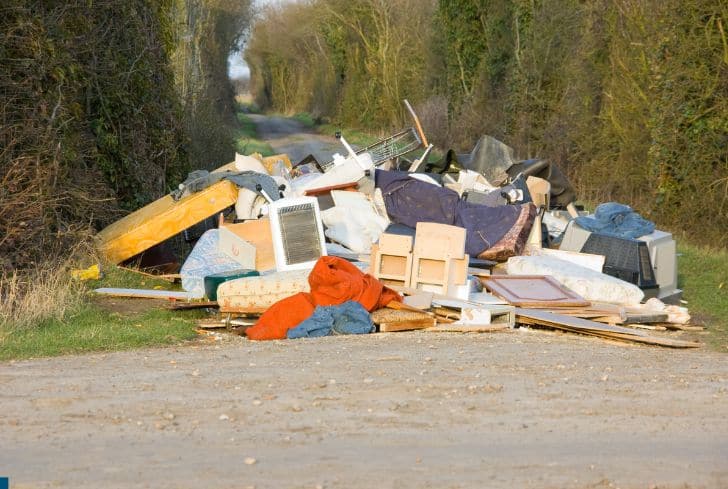
Is Dumping Yard Waste Illegal?
Dumping yard waste becomes illegal if the person discards it on private or public land when it is not permitted. When done in illegal dumping sites, it becomes illegal.
Usually, dumping yard waste in forests, waterways, drainage ditches, open fields, and behind culverts is considered illegal.
Moreover, dumping them in vacant lots, alleyways, and dumpsters is also illegal. If the yard waste is dumped anywhere but a location designated for trash disposal, that constitutes illegal dumping.
Aside from improper waste disposal, dumping yard waste also becomes illegal if you throw it over your fence, dump the pesticides and other chemicals into waterways, storm drains, or ground, and burn or bury solid non-biodegradable waste.
Furthermore, it is illegal because of its risks and negative impacts on human health, the environment, and our planet in general.
Pest populations may increase due to illegal yard waste dumping, chemicals may be inhaled and affect human health, and animals may eat or drink toxic chemicals from the waste, resulting in death and many other negative consequences.
It corresponds to a fine of a lot of money, and as normal civilians, it would be better to dispose of yard waste properly than commit something illegal and pay money for it.
To avoid this issue, always dispose of your waste in designated areas.
Never transport loose items of garbage that might fall at the back of your vehicle. Always practice recycling and using biodegradable waste for composting to reduce the garbage you need to dump.
If you are a victim of illegal dumping of yard waste, make sure to do any of the following:
- Install a lock on your dumpster; post “No Dumping” and “No Trespassing” signs; install security cameras.
- Always clean your area to show that you don’t tolerate littering.
- Call and report it to the local authorities once you catch anyone, and take pictures of the dumped materials or the vehicle plate number of the one who illegally dumped it for proof.
